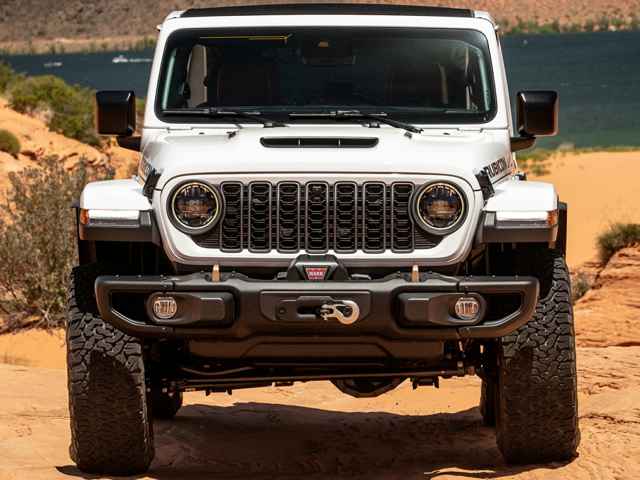
When you’re driving, you need to know that your brakes will work exactly when you need them to. The braking system is mechanical, and over time, parts can become worn or damaged, and you’ll need a brake repair. As your CDJR dealer, we’d like to tell you about some signs that your brakes could be in trouble.
Screeching and Grinding
Your brakes shouldn’t make any noise when they bring your car to a stop. If you hear screeching or grinding noises, these are signs of brake trouble. These noises are made by the brake pads wearing in two different stages of wear. The pads have a 1/2″ friction material covering that generates the friction that brings the wheels to a stop. Each time you apply the brake, minute particles of this material flake off.
A metal spike inside the pad becomes visible when the pad thickness drops to 1/8″. This spike will scratch against the rotor when you brake, producing screeching noises. If the pads aren’t replaced, the material covering will eventually wear off completely. When this happens, the metal pads will gouge into the rotors and make a grinding noise. We can solve both of these noises by replacing your pads.
Chemical Smells
Brake fluid is essential for your braking system. The fluid fills the braking system and provides the hydraulic power that allows the brakes to engage. The high pressure in the braking system generates heat, and this combination of pressure, heat, and age will affect the fluid. It loses its heat-resistant properties, and this can cause the fluid to overheat.
Hot brake fluid can burn if it doesn’t get a chance to cool down. If this happens, you’ll smell a foul chemical smell wafting through the windows. Burnt brake fluid can’t provide hydraulic power, which means your brakes won’t work. If you think the brake fluid might be burning, call our service department ASAP so we can investigate and fix this issue.
Pulling to One Side
If your vehicle pulls to one side when you hit the brake, you have a brake problem. A set of calipers is positioned above each wheel rotor. When you brake, the calipers are forced against both sides of each rotor. The brake pads inside the calipers then generate friction against the rotors and bring them to a stop.
All four calipers should engage simultaneously. If your car pulls in one direction, this means that the caliper on the wheel that’s still moving hasn’t engaged. This failure could be caused by a blockage in the brake hose connected to that caliper, or the caliper might be jammed or rusted. Our technicians will investigate and fix the issue.
If you have a problem with your brakes, visit our service department right away at Courtesy CDJR in Altoona, PA.








